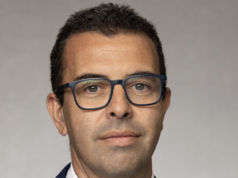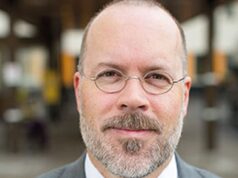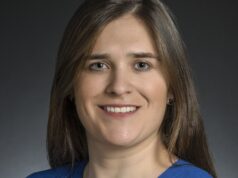
The great varicose vein debate at the Charing Cross International Symposium this year tackled the question of whether reflux is best abolished using an endovascular method. Speaking in support of endovenous laser treatment (ELT) and radiofrequency (RF) ablation were Thomas Proebstle, a dermatologist from Heidelberg, Germany, and Michel Perrin (Chassieu, France). In opposition, defending surgical ligation and stripping were Prakash Madhavan (Dublin, Ireland) and Alun Davies (London, UK).
Proebstle noted that there are four criteria for comparison of surgery with ELT: patient selection, primary success rate, recurrence rate and subsequent quality of life. However, in his view, “the center of the debate is recurrence”. He quoted two studies with recurrence rates for ELT of 6.6% at two years and 10% at one year. Classic vein surgery has increasing recurrence rates that are roughly equivalent to primary success rates of endovascular approaches, he claimed. And with technical and tactical failures in surgery, “does this mean that high ligation/stripping is simply an unteachable procedure?”
The main difference between endovenous treatments and the gold standard of surgical stripping and ligation is the recovery time. Proebstle explained how he can treat people in the morning and they return to work in the afternoon. “For business people, who earn thousands of pounds a day, a week or more off work means they lose a lot of money!”
Proebstle is no stranger to surgery. While he has used ELT since 2001 – and is a particular proponent of the new CoolTouch CTEV neodymium:yttrium-aluminum-garnet (Nd:YAG) laser, which operates at 1,320nm instead of the 940nm diode laser (Dornier Medtec) or the 810nm EVLT from Diomed – he almost exclusively employs endovascular methods these days. “I am convinced that traditional surgery will be completely replaced by other technologies in the future. In my practice it already has,” he told Vascular News after the debate.
Madhavan, opposing the motion, tried to win over the audience by using humorous slides. He started by saying that standard open ligation, stripping and phlebectomy remain the gold standard against which all new treatment modalities are compared. Furthermore, countering Proebstle’s claims, Madhavan emphasized that not all patients are suitable for endovenous treatment, while open surgery can be performed on all-comers. There are no long-term follow-up data for ELT. One study he highlighted had a 20% reflux rate at two years. “I don’t think that realistically you can call this a successful procedure,” he stated, adding that most of the poor results reported for surgical techniques actually relate to poor surgical skills. Madhavan’s comparison of ELT with an atomic bomb certainly raised laughs from the audience. And he finished by mentioning cost and staffing issues: “Is ELT cost-effective? Hell no!”
Perrin spoke next in favor of radio-frequency (RF) ablation using the Closure system (VNUS Medical Technologies). He reiterated some of Proebstle’s points, adding that minimally invasive endovascular treatments gave “cost savings for society”, which are surely the most important kind. Perrin claimed that randomized studies comparing traditional vein stripping surgery with RF ablation demonstrated that the latter is associated with less post-operative morbidity and quicker recovery. In addition, neovascularization – one of the major causes of recurrence after operative treatment – is less frequent after RF treatment.
Perrin concluded by saying that RF is preferred to laser treatments because it is has a standardized protocol while both the equipment and the treatment parameters can vary for laser. “Therefore it is very difficult to compare results from EVL studies,” he noted. Postoperative complications are similar for the two modalities, but there is more pain with laser treatment.
Davies closed out the speeches against the motion. Advising the audience to “read the motion carefully – it’s abolition of reflux is ‘best’ achieved… But who is it best for: patients, cost savings or the doctor playing with a new device?” He stated that “surgery undoubtedly improves the quality of life for patients”.
“Surgery is simply the best,” he continued. “Stripping is easy! It’s been around for 100-150 years, and we know the results as well as the complications.” Endovenous treatments, on the other hand, need more specialized training, have an over-reliance on ultrasound and can actually take longer. He also queried the recurrence rate, pointing out that blaming it solely on surgery ignores other causes, such as disease progression, neovascularization, and tactical scanning and technical errors. Davies added that there is inadequate Level 1 evidence to support claims of comparable results, and even Perrin has called for a randomized controlled trial to truly compare all forms of venous ablation. “The key to it all,” he concluded, “is patient choice and information.”
During discussion, Michael Gough (Leeds, UK) commented on the panelists’ “selective choice of literature” to back up their arguments for surgery. “How can you consider ELT to be more expensive when it’s done on an out-patient basis with one doctor, one nurse and no operating theatre?” He added that varicose vein surgery was “the commonest cause of litigation”. Davies countered, “In reality we are waiting to see litigation from ELT – it’s just a matter of time.”
Tellingly, Perrin picked up his own team-mate on a couple of points about the literature, which Proebstle contended. “But Michel – they’re the opposition,” he exclaimed. However, the damage was done and this in-fighting may well have cost them the vote, as exactly two-thirds of the audience voted against the motion.













